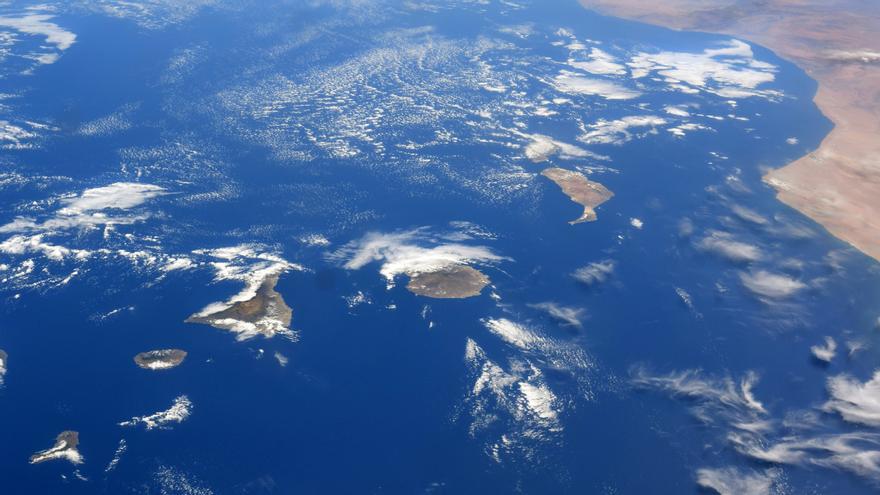
The unique beauty of Canary Islands, with phenomena as well-known as the donkey belly, is visible even 400 kilometers from the Earth’s surface, from outer space. The Danish astronaut European Space Agency (ESA) Andreas Mogensen, new commander of the International Space Station, has taken office with some spectacular images of the Archipelago that have been distributed this Thursday.
Mogensen has shared through his profile on X (formerly Twitter) four snapshots taken this Wednesday from the International Space Station. In the first of them, taken from somewhere southeast of the Archipelago, you can see almost all the islands –The Palm only partially appears – with the most mountainous ones, such as Tenerife either Gran Canariasurrounded by clouds driven by the trade winds.
The two most populated islands of the Archipelago also have their own snapshots, as do Fuerteventura and Lanzarote. The image of Gran Canaria shows a common phenomenon in the north of the Island, the donkey belly, which is also repeated in Tenerife. On this island, if you look closely, it is also possible to identify areas where the ravages of the recent fire are visible, as is the case of the Arafo and Güímar and Candelaria heights.
Canary Islands as a training place
In his message on social networks, Mogensen remembers the importance of the Archipelago for astronauts during their training periods. The arid volcanic landscapes of the Lanzarote island They are the setting where they usually train for future exploration missions on the Moon or Mars. In fact, another team is currently on the island in which Frenchman Thomas Pesquet, also from ESA, participates.
Mogensen has been on the International Space Station for a month and assumed the position of commander – he is the sixth European astronaut to do so – this week, after being replaced by Russian cosmonaut Sergei Prokopiev. In addition to the scientific experiments he carries out on board, he now also is responsible for the safety, health and well-being of the rest of the crew.
















